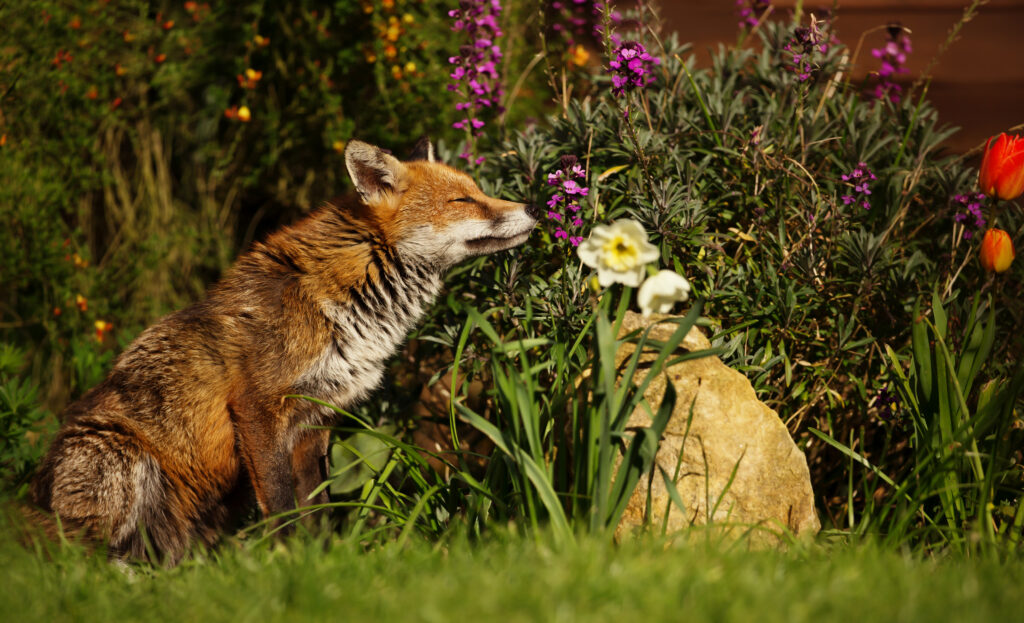Creating a wildlife-friendly garden can be achieved in the smallest and biggest ways. By intentionally designing your outdoor space with the local ecosystem in mind, you are contributing to biodiversity in your local area and creating a more sustainable world to live in. In this blog, we will give you handy tips to be more inclusive of sustainable ideas when designing your new garden.
Biodiversity is crucial for maintaining healthy ecosystems that encourage wildlife and native plants, ensuring the stability and resilience of natural communities. Attracting local species into your garden has many benefits including natural pest control. Many birds, insects and other animals feed on pests reducing the need for harmful chemical pesticides. Welcoming birds into your homes is easy by setting up natural bird feeders, habitats and water baths.
Native plants are the backbone of any plan to create a wildlife-friendly garden, serving as essential components in supporting local populations. The Intricate relationship between plants and animals in local ecosystems has led to a symbiotic relationship that meets the needs of both parties, providing food, resources for habitats, and creating natural shelter from predators.
Exotic plants by contrast often lack the necessary ecological connections with local plant species. These plants may look amazing in your gardens but they may not typically provide the same level of support for their native counterparts. These alien plants may fail to offer suitable food and habitat resources, with some species of alien plants becoming invasive and destroying local ecosystems.
When coming to select native plants for your wildlife-friendly garden, there is a large range to choose from. Consider incorporating a mix of plants that cater to the specific needs of various animals and insects. An example is pollinating plants such as bee balm or black-eye Susan are favoured by bees and butterflies and help feed them whilst continuing to pollinate the local ecosystem. By strategically selecting a combination of plants to meet multiple needs of different species, you can further support the local ecosystem and help it thrive.
Having a diverse selection of native plants is key to creating a resilient ecosystem that can adapt to environmental changes and help the varying needs of different species. By layering your beds in different types of shrubs, perennials and ground-covers, you can create habitats that accommodate a diverse range of insects.
When considering the factors that will help natural wildlife to thrive by supporting the ecosystem through sustainable gardening, it is important to think beyond just planting native species.

Firstly, consider installing bird feeders, bird baths, butterfly puddling areas and nesting boxes throughout your garden. All these small structures when combined can create a haven for a lot of wildlife and allow for the native ecosystem to thrive. Incorporating water sources is also a great thing to do for the local wildlife, whether it’s just a bird bath, a pond or a small stream. Be sure to check on the water quality of these sources of water and to keep bird baths clean and topped up during hot months. Adding aquatic plants to ponds and streams can help to naturally filter water sources reducing the need for interference.
Maintaining a wildlife-friendly garden involves more than an occasional watering or weeding. When caring for your garden in this way you need to take a holistic approach, prioritising the health and wellbeing of the native ecosystem.
You can achieve this firstly, by doing proper maintenance to your garden. Proper watering, mulching, weeding, and pruning are all essential for supporting healthy plant growth and providing a habitat for wildlife. Furthermore, avoiding the use of chemical pesticides and fertilizers is crucial for protecting wildlife and promoting a more natural ecosystem in your garden.
Lastly, regular observation and monitoring of your garden area is essential for assessing wildlife activity and making repairs and adjustments to your garden when needed. Take time to watch the wildlife in your back garden, look for their behaviours, what they like and don’t like and make any adjustments to make them feel more at ease in your garden. Keep a journal or logbook to record your findings to track changes over time.
Creating a wildlife-friendly garden with native plants is a rewarding journey and incredibly easy to start. Inspired Homes and Gardens has completed projects like this in the past and we endeavour to create as many sustainable areas in our gardens as possible to help encourage local wildlife. If you’re looking to embark on a new sustainable wildlife-friendly garden and need some advice and help, drop us a call and contact us about how we can help you help the earth.
